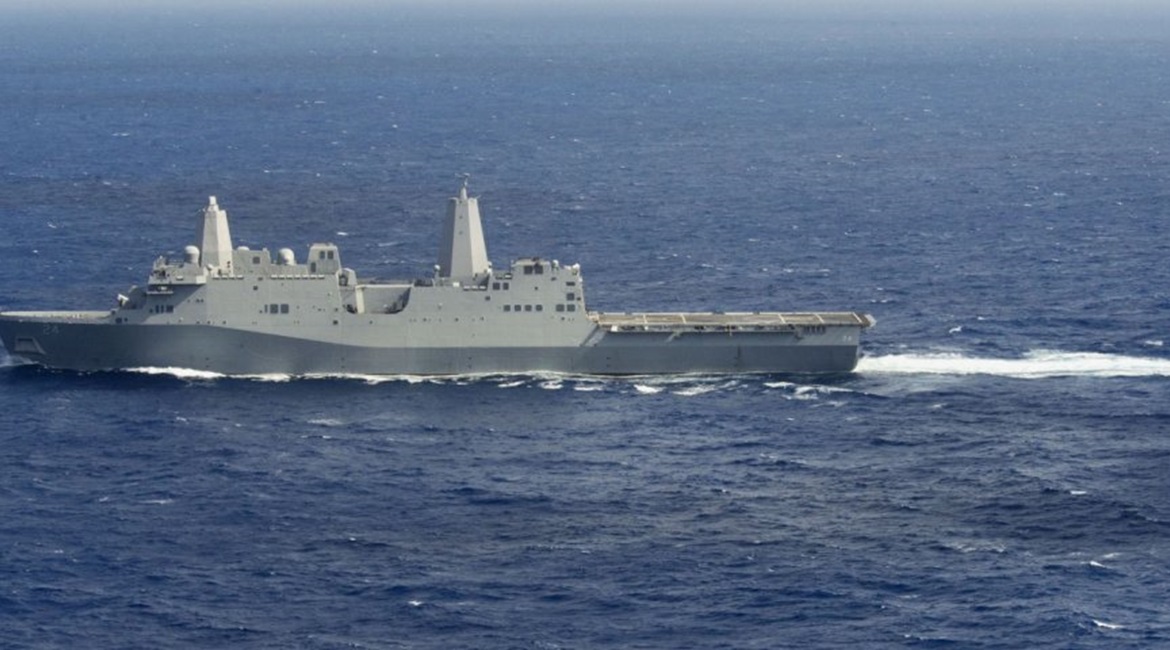
Although the US Marine Corps (USMC) will still use traditional relatively large amphibious-centric US Navy (USN) ships for operations, the service is focusing on a shift to “smaller, lighter, more affordable” fleet of new ships, said General David Berger, USMC commandant.
Gen Berger called the traditional amphibious ships “absolutely essential” on 23 September during a keynote speech at the annual Modern Day Marine conference, which was run virtually his year.

The US Marine Corps still considers vessels like the San Antonio-class amphibious transport dock USS Arlington (LPD-24) essential, but the service wants a new fleet of smaller and more affordable amphibious ships. (US Navy)
However, Berger noted, the additional new fleet will provide greater movement flexibility in littoral and contested environments.
The traditional USMC-USN power projection game plan – sailing ships across an expanse of water and landing a large force from a distant offshore point – needs to be updated, he said. “That conventional sort of World War II approach is too narrow.”
He asked, “Will we need the ability to put a force ashore where and when we want to? Yes.” However, he doubted that force would be marine expedition brigades landing across multiple beaches.
The rethink on amphibious operations is part of Gen Berger’s plans to revamp the USMC towards a lighter, more agile and more modern force, as noted in his Force Design 2030 strategy released in March.
For example, he pointed out during the conference, the USMC and joint force in the Western Pacific are still geared to a Korean Peninsula conflict – as they have been since 1952. “It’s not a good laydown, not a great posture for the joint force 20 years from now [or] 10 years from now,” he said.
Looking to read the full article?
Gain unlimited access to Janes news and more...






